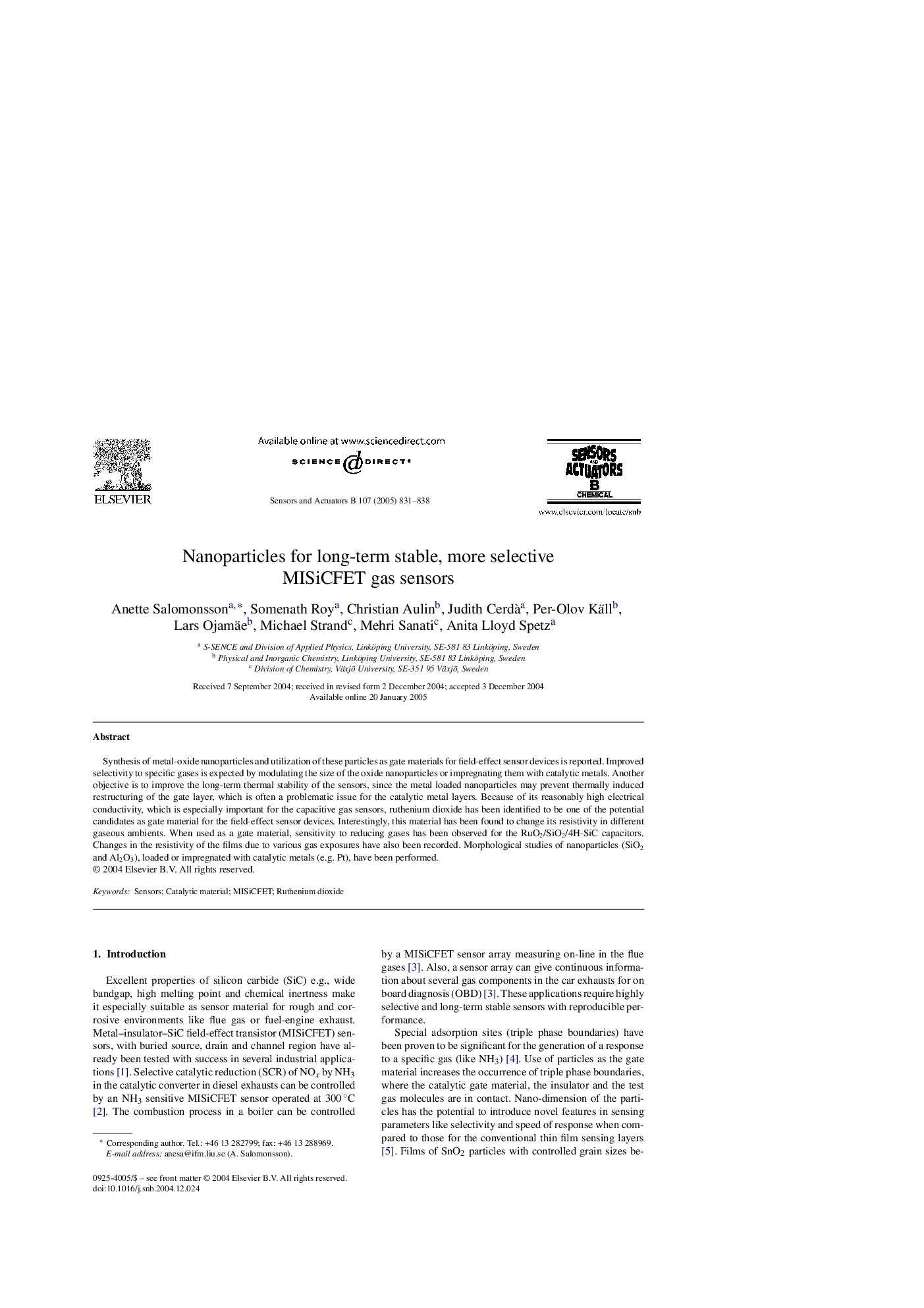| Article ID | Journal | Published Year | Pages | File Type |
|---|---|---|---|---|
| 10410926 | Sensors and Actuators B: Chemical | 2005 | 8 Pages |
Abstract
Synthesis of metal-oxide nanoparticles and utilization of these particles as gate materials for field-effect sensor devices is reported. Improved selectivity to specific gases is expected by modulating the size of the oxide nanoparticles or impregnating them with catalytic metals. Another objective is to improve the long-term thermal stability of the sensors, since the metal loaded nanoparticles may prevent thermally induced restructuring of the gate layer, which is often a problematic issue for the catalytic metal layers. Because of its reasonably high electrical conductivity, which is especially important for the capacitive gas sensors, ruthenium dioxide has been identified to be one of the potential candidates as gate material for the field-effect sensor devices. Interestingly, this material has been found to change its resistivity in different gaseous ambients. When used as a gate material, sensitivity to reducing gases has been observed for the RuO2/SiO2/4H-SiC capacitors. Changes in the resistivity of the films due to various gas exposures have also been recorded. Morphological studies of nanoparticles (SiO2 and Al2O3), loaded or impregnated with catalytic metals (e.g. Pt), have been performed.
Related Topics
Physical Sciences and Engineering
Chemistry
Analytical Chemistry
Authors
Anette Salomonsson, Somenath Roy, Christian Aulin, Judith Cerdà , Per-Olov Käll, Lars Ojamäe, Michael Strand, Mehri Sanati, Anita Lloyd Spetz,
